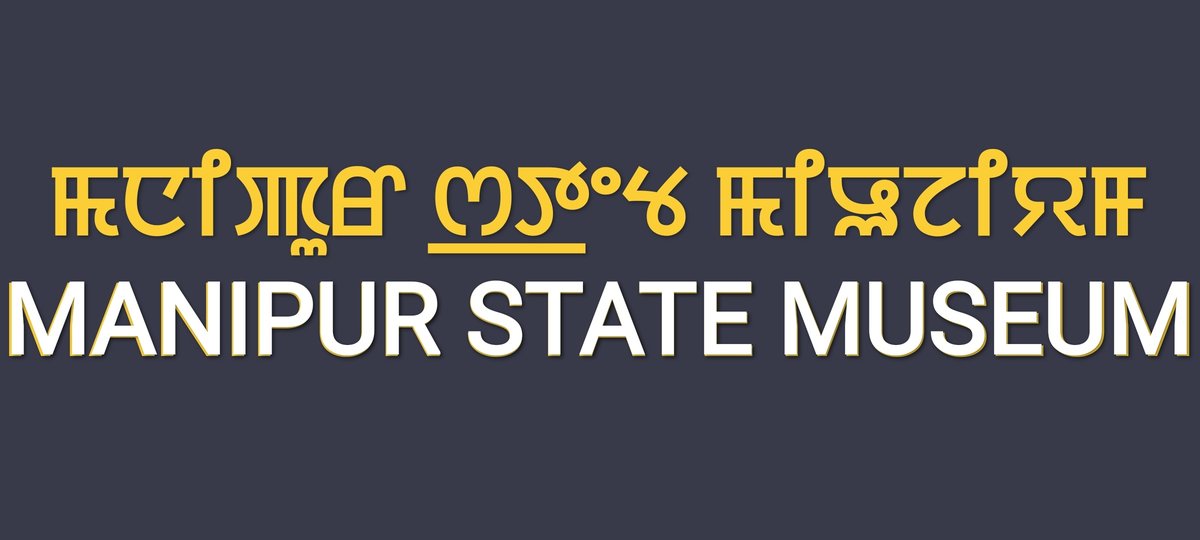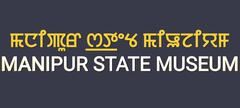
Comprehensive Guide to Visiting Manipur State Museum, Lamsang, India
Date: 23/07/2024
Introduction
Table of Contents
- Introduction
- Establishment and Early Years
- Architectural Design
- Collections and Exhibits
- Visitor Information
- Significant Events and Milestones
- Preservation and Conservation Efforts
- Educational and Research Initiatives
- Future Plans and Developments
- Travel Tips and Nearby Attractions
- FAQ
- Conclusion
- References
Establishment and Early Years
The Manipur State Museum, located in Imphal, was inaugurated on September 23, 1969, by the then Prime Minister of India, Indira Gandhi. The museum was established with the primary aim of preserving and showcasing the rich cultural heritage and history of Manipur. The museum’s initial collection was modest, comprising artifacts donated by local residents and items collected by the state government. Over the years, the collection has grown significantly, thanks to continuous efforts by the museum authorities to acquire and preserve historical artifacts.
Architectural Design
The museum building itself is a testament to the architectural styles prevalent in Manipur. The structure combines traditional Manipuri architectural elements with modern design principles. The use of local materials and traditional construction techniques ensures that the building harmonizes with its surroundings while providing a suitable environment for preserving delicate artifacts. The museum’s design also includes features that facilitate the display of a wide range of exhibits, from large sculptures to delicate textiles.
Collections and Exhibits
The Manipur State Museum boasts a diverse collection that spans various periods of Manipur’s history. The exhibits are categorized into several sections, each focusing on a different aspect of the state’s cultural and historical heritage.
Archaeological Section
This section houses artifacts from the prehistoric and early historic periods of Manipur. Notable exhibits include stone tools, pottery, and metal objects that provide insights into the early human settlements in the region. The archaeological section also features items from the medieval period, including sculptures and inscriptions that shed light on the region’s political and cultural developments.
Ethnological Section
The ethnological section is one of the most popular areas of the museum. It showcases the diverse cultural practices of the various ethnic groups in Manipur. The exhibits include traditional costumes, jewelry, musical instruments, and household items. This section also features life-sized models of traditional Manipuri houses, providing visitors with a glimpse into the daily lives of the people.
Natural History Section
The natural history section of the museum is dedicated to the flora and fauna of Manipur. It includes taxidermy specimens of various animals, birds, and insects native to the region. The section also features botanical exhibits, including preserved plant specimens and models of local ecosystems. This section aims to educate visitors about the rich biodiversity of Manipur and the importance of conservation.
Art and Craft Section
This section highlights the artistic and craft traditions of Manipur. It includes a wide range of exhibits, from traditional paintings and sculptures to contemporary artworks. The section also features displays of traditional crafts such as weaving, pottery, and wood carving. Visitors can learn about the techniques and materials used by local artisans and the cultural significance of various art forms.
Historical Artifacts
The museum houses an extensive collection of historical artifacts that provide a glimpse into the rich history and heritage of the region. Among the notable exhibits are ancient manuscripts, royal regalia, and traditional weapons. The museum’s collection includes Puya manuscripts, which are ancient texts written in the Meitei script. These manuscripts are invaluable for understanding the history, culture, and religious practices of the Manipuri people.
Textile Gallery
The Textile Gallery features a rich collection of traditional textiles and weaving techniques from different communities in Manipur. The exhibits include handwoven fabrics, traditional shawls, and other textile products. One of the highlights of this gallery is the display of Phanek, a traditional wrap-around skirt worn by Manipuri women. The intricate patterns and vibrant colors of these textiles reflect the rich weaving traditions of the region.
Numismatic Collection
The museum’s numismatic collection includes a wide range of coins and currency notes from different periods in Manipur’s history. The collection features ancient coins from the Kangleipak kingdom, as well as coins from the British colonial period and post-independence India. The exhibits provide valuable information about the economic history and trade practices in Manipur.
Arms and Armory
The Arms and Armory section of the museum showcases a collection of traditional and historical weapons used by the Manipuri warriors. The exhibits include swords, spears, shields, and firearms from different periods in history. The collection highlights the martial traditions and the military prowess of the Manipuri people.
Traditional Music and Dance
The museum also features exhibits related to the traditional music and dance forms of Manipur. The exhibits include musical instruments such as the Pena, a traditional string instrument, and the Pung, a traditional drum. These instruments are integral to the traditional music and dance performances in Manipur. The exhibits also include costumes and accessories used in traditional dance forms such as the Ras Lila and Lai Haraoba.
Visitor Information
Visiting Hours
The Manipur State Museum is open from 10:00 AM to 4:30 PM, Tuesday to Sunday. The museum is closed on Mondays and public holidays.
Tickets
- Adults: INR 20
- Children (below 12 years): INR 10
- Students (with valid ID): INR 5
Accessibility
The museum is wheelchair accessible and provides facilities for visitors with disabilities.
Significant Events and Milestones
Over the years, the Manipur State Museum has hosted numerous exhibitions and cultural events that have contributed to its reputation as a center of cultural preservation and education. Some of the significant milestones in the museum’s history include:
- 1975: The museum hosted its first major exhibition, showcasing artifacts from the medieval period of Manipur. The exhibition attracted scholars and historians from across the country and helped establish the museum’s reputation as a center for historical research.
- 1985: The museum underwent a major renovation, with the addition of new galleries and improved facilities for the preservation and display of artifacts. The renovation project was funded by the state government and aimed to enhance the visitor experience.
- 2000: The museum launched an outreach program aimed at educating school children about the cultural heritage of Manipur. The program includes guided tours, workshops, and interactive exhibits designed to engage young visitors.
- 2015: The museum celebrated its 50th anniversary with a series of special exhibitions and events. The anniversary celebrations included the unveiling of a new gallery dedicated to contemporary art and the launch of a digital archive of the museum’s collection.
Preservation and Conservation Efforts
Climate Control and Storage
One of the key challenges in preserving historical artifacts is maintaining a stable environment. The museum has implemented a state-of-the-art climate control system that regulates temperature and humidity levels in the galleries and storage areas. This system helps prevent the deterioration of sensitive materials and ensures the long-term preservation of the collection.
Restoration Projects
The museum has undertaken several restoration projects to preserve and restore damaged artifacts. These projects often involve collaboration with experts from other institutions and can take several years to complete. Notable restoration projects include the restoration of ancient manuscripts and the conservation of traditional textiles.
Educational and Research Initiatives
Educational Programs
The museum’s educational programs are designed to engage visitors of all ages and backgrounds. These programs include guided tours, workshops, and lectures on various aspects of Manipur’s history and culture. The museum also offers special programs for school groups, including hands-on activities and interactive exhibits.
Research Facilities
The museum provides research facilities for scholars and historians studying the history and culture of Manipur. These facilities include a reference library, access to the museum’s digital archive, and support from the museum’s staff. The museum also publishes a journal that features research articles and reports on its collection and activities.
Future Plans and Developments
Expansion Projects
The museum is planning to expand its facilities to accommodate its growing collection and provide additional space for exhibitions and educational programs. The expansion project includes the construction of new galleries, a larger storage area, and improved visitor amenities.
Digital Initiatives
The museum is also focusing on digital initiatives to make its collection more accessible to a wider audience. These initiatives include the development of a comprehensive digital archive, virtual tours of the museum, and online educational resources. The museum’s digital initiatives aim to reach a global audience and promote the cultural heritage of Manipur.
Travel Tips and Nearby Attractions
- Travel Tips: Wear comfortable shoes as the museum involves a fair amount of walking. Photography is allowed but without flash to preserve the artifacts.
- Nearby Attractions: After your visit, explore other historical sites in Imphal, such as Kangla Fort and the War Cemetery.
- Local Cuisine: Don’t miss trying local Manipuri dishes like ‘Eromba,’ ‘Ngari,’ and ‘Chak-hao Kheer’ at nearby eateries.
FAQ
1. What are the visiting hours of the Manipur State Museum?
The museum is open from 10:00 AM to 4:30 PM, Tuesday to Sunday. It is closed on Mondays and public holidays.
2. What are the ticket prices for the Manipur State Museum?
- Adults: INR 20
- Children (below 12 years): INR 10
- Students (with valid ID): INR 5
3. Is the museum accessible for visitors with disabilities?
Yes, the museum is wheelchair accessible and provides facilities for visitors with disabilities.
